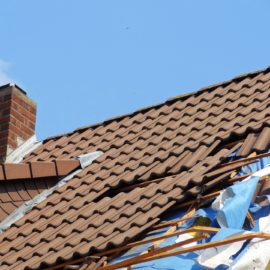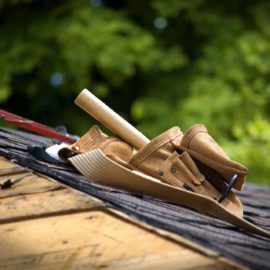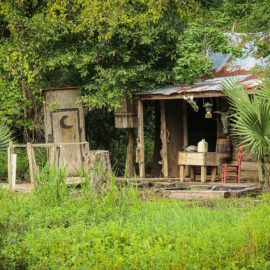
(Newlab, Aclima, Inc.)
Air pollution is coming to the for, or rather monitoring air pollution is. Money for sensors and now a car to travel up and down the lower state monitoring spot pollution.
There’s a new drive to monitor pollution in Louisiana’s chemical corridor — literally. Automobiles equipped with complex air monitoring sensors will be capturing information on toxic chemicals as they travel block by block, during both day and night, from Plaquemines Parish to just north of Baton Rouge along Louisiana’s Mississippi River chemical corridor. The new air monitoring project will be funded by a $500,000 grant from the federal Environmental Protection Agency to the Louisiana Environmental Action Network, a Baton Rouge-based organization that represents dozens of local environmental groups across the state. The project is one of 132 community air pollution monitoring projects nationwide announced by EPA on Thursday that are funded with $53.4 million from the Inflation Reduction Act and the American Rescue Plan. That funding announcement included another four projects to be led by Louisiana nonprofits and state agencies, and one by a nonprofit organization on the Louisiana-Texas border.
nola.com

Thisis part of the EPA’s new emphasis on protecting the health of the poor and disadvantaged.
EPA Administrator Michael Regan linked the grants to the agency’s new emphasis on addressing the effects of pollution on the disadvantaged and people of color. “People who live in communities that experience environmental and air quality challenges know their experiences better than anyone else,” Regan said in a telephone news conference. “They can tell you about those mornings when smog lingers in the air, making it more difficult to breathe, or those days when their child’s asthma is particularly challenging to treat. So it’s time that we empower American communities with the tools and the resources they need to track critical data about the air that they breathe.” He called out the Louisiana chemical corridor, often referred to by environmentalists as “cancer alley,” as a key focus of the new grants.

(Louisiana Environmental Action Network)
The bulk of the money this group gets will be spent on the “smart” car.
The smart cars that will serve as the main focus of the LEAN grant will be provided by Aclima, a San Francisco-based company that already provides similar monitoring services to California and New York. The sensors will provide real-time data on particulate matter and dozens of chemicals released into the air by industries, businesses and vehicles, including greenhouse gases, with the information to be posted on websites. “We conducted a two-week demonstration of the technology (along the chemical corridor in 2021) which showed our community partners how we could really shine the light on the pollution that people have been experiencing for years in that area,” said Davida Herzl, founder of Aclima.
The technology for the cars took 10 years to develop.
The technology took 10 years to develop, with part of that work done in partnership with EPA’s research and development program, she said. Existing monitors operated in set positions by the state Department of Environmental Quality or EPA provide accurate data for their locations, but fail to capture data in other locations near chemical plants, she said. “Science we’ve actually co-published with EPA shows that emissions vary block by block by up to 800%,” Herzl said. And the measurements made of individual chemicals with the new sensors are detailed enough to link individual chemicals to the source. Marylee Orr, executive director of LEAN, said the grant also will pay for several fixed monitoring stations, with their locations to be determined after meetings with community leaders and state officials. “The hope is that this project is just the beginning of ongoing real-time monitoring, and if successful, that it can be done in other places in our state,” she said.

(LSU Health Foundation)
The LSU Health Foundation received a grant to focus on the Claiborne/I-10 corridor.
Another grant, for $498,480, was awarded to the LSU Health Foundation for a project aimed at improving public understanding of health issues associated with traffic along the Claiborne Avenue/Interstate-10 corridor in New Orleans. A key purpose of the grant is to work with students to understand the corridor’s history and related health issues. It can then inform alternatives being considered for that stretch of the interstate system, including tearing down the present bridge that cuts through the historic Treme neighborhood, or leaving it intact and developing locations under the bridge for recreation and business. The project includes air monitoring along the corridor, focused on particulate matter, a key pollutant of vehicle emissions. The grant will also pay for creation of a “lending library” for air emission monitoring equipment.

The Deep South Center for Environmental Justice also received a grant.
The Deep South Center for Environmental Justice, based in New Orleans, was awarded a $498,911 grant to both increase the number of air monitoring stations in St. John the Baptist Parish, and to help educate residents on the significance of the results. The new monitors would measure small particulate matter, volatile organic chemicals and nitrogen oxide. The monitors may also specifically monitor for chloroprene, a chemical used by Denka Performance Elastomers in the manufacture of neoprene and classified as likely cancer-causing. In October, the EPA informed the DEQ and the state Department of Health that they may be violating federal civil rights laws and regulations by allowing Black people to suffer disproportionate impacts from air pollution in the industrial corridor, including an increased risk of cancer. The notice addressed Denka and residents in St. John Parish, where in 2014, EPA found the area around the Denka plant had the greatest airborne cancer risk in the nation. The grant also will pay for scientists at three historically Black universities — Xavier University of New Orleans, Alabama A & M University and Tennessee State University — to assist in designing the monitoring program and in counseling the community on the results.

(Department of Environmental Quality)
LDEQ received two of the grants.
DEQ also has been provided two of the grants. One will pay for the installation of a temporarily located community air monitoring site in St. James Parish that could measure more than 60 different chemicals. There are 19 existing industrial sites on the east and west banks of the parish that released 1.1 million pounds of toxic chemicals into the air in 2020. The state is considering issuing permits that would allow construction of the proposed $9.4 billion Formosa Plastics facility in the parish that would emit even more chemicals. A 2019 analysis by ProPublica and The Times-Picayune | The Advocate showed the air around the planned Formosa plant was more toxic with cancer-causing chemicals than 99.6% of industrialized areas in the country. In September, 19th Judicial District Judge Trudy White threw out DEQ permits for the Formosa facility. Her decision has been appealed by DEQ and FG LA. According to the state’s grant application, establishment of the new monitoring site will provide “the community a voice in the monitoring of their air quality, to the disproportionally overburdened and underserved area of St. James Parish.”

(Google Earth)
The second LDEQ grant will also be a monitoring effort.
DEQ’s second grant, for $422,255, will pay for the establishment of a new monitoring facility between the McFarland Cascade/Stella-Jones wood treating facility in Pineville and the Stellla Jones wood treating facility in Alexandria, both of which use creosote to treat lumber. DEQ said it applied for the grant because community groups and residents near the two wood treatment facilities have repeatedly filed complaints over odors and toxic emissions. DEQ will have community representatives help select the monitoring site location. In its grant application, DEQ pointed out the area’s checkered civil rights history, including the 1942 Lee Street race riot at Camp Claiborne that killed as many as 300 Black civilians and soldiers. “Alexandria/Pineville was identified by the EPA as an environmentally overburdened, underserved and economically distressed area,” the grant application said.

(Port Arthur Community Action Network)
The Port Arthur Community Action Network received a grant for placing monitors.
The Port Arthur Community Action Network, based in Texas, was given $407,600 to place fixed air sensors and mobile air monitors in locations in Port Arthur and the greater Lake Charles area.

(Port Arthur Community Action Network)
The Port Arthur grant also monitors areas in Lake Charles.
The mobile air monitoring will include three different areas: a wide swath including Mossville, Westlake, Sulphur and Carlyss in Calcasieu Parish; areas on both sides of the Calcasieu Ship Channel in Cameron Parish, including Cameron and Holly Beach, and stretching along the shore into Texas at the Sabine Channel, and several locations in and near Port Arthur, including Port Neches and Atreco, along Sabine Lake.

All these monitors will help the citizens and will hold LDEQ’s feet to the fire as some of the monitoring areas overlap.



